Benjamin Chen
Optimizing ML Training with Metagradient Descent
Mar 17, 2025Abstract:A major challenge in training large-scale machine learning models is configuring the training process to maximize model performance, i.e., finding the best training setup from a vast design space. In this work, we unlock a gradient-based approach to this problem. We first introduce an algorithm for efficiently calculating metagradients -- gradients through model training -- at scale. We then introduce a "smooth model training" framework that enables effective optimization using metagradients. With metagradient descent (MGD), we greatly improve on existing dataset selection methods, outperform accuracy-degrading data poisoning attacks by an order of magnitude, and automatically find competitive learning rate schedules.
A Transfer Learning Pipeline for Educational Resource Discovery with Application in Leading Paragraph Generation
Jan 07, 2022
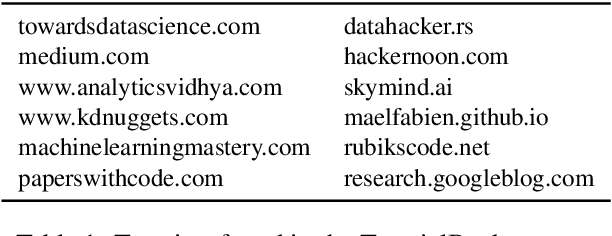
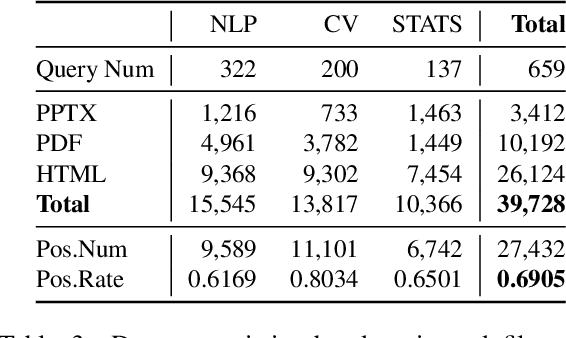

Abstract:Effective human learning depends on a wide selection of educational materials that align with the learner's current understanding of the topic. While the Internet has revolutionized human learning or education, a substantial resource accessibility barrier still exists. Namely, the excess of online information can make it challenging to navigate and discover high-quality learning materials. In this paper, we propose the educational resource discovery (ERD) pipeline that automates web resource discovery for novel domains. The pipeline consists of three main steps: data collection, feature extraction, and resource classification. We start with a known source domain and conduct resource discovery on two unseen target domains via transfer learning. We first collect frequent queries from a set of seed documents and search on the web to obtain candidate resources, such as lecture slides and introductory blog posts. Then we introduce a novel pretrained information retrieval deep neural network model, query-document masked language modeling (QD-MLM), to extract deep features of these candidate resources. We apply a tree-based classifier to decide whether the candidate is a positive learning resource. The pipeline achieves F1 scores of 0.94 and 0.82 when evaluated on two similar but novel target domains. Finally, we demonstrate how this pipeline can benefit an application: leading paragraph generation for surveys. This is the first study that considers various web resources for survey generation, to the best of our knowledge. We also release a corpus of 39,728 manually labeled web resources and 659 queries from NLP, Computer Vision (CV), and Statistics (STATS).
CLICKER: A Computational LInguistics Classification Scheme for Educational Resources
Dec 16, 2021
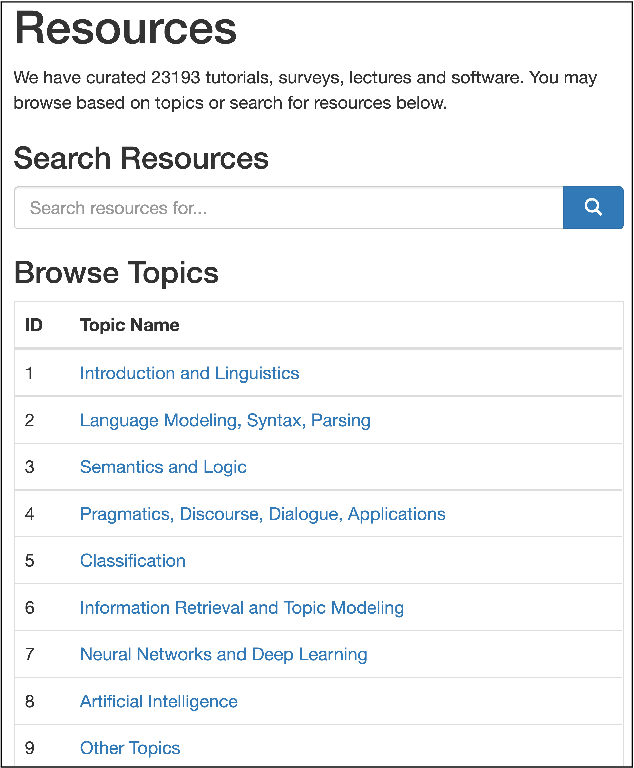
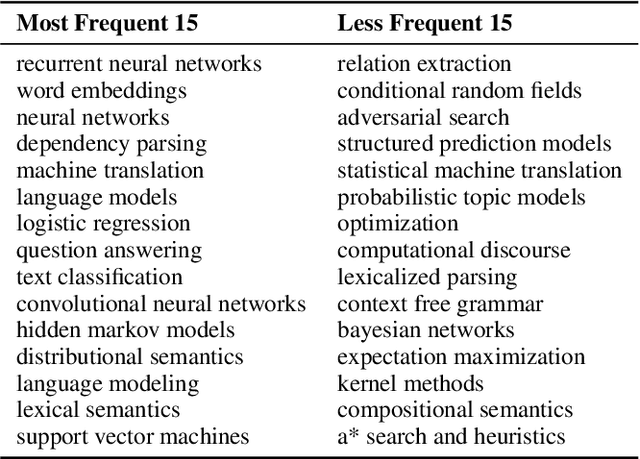
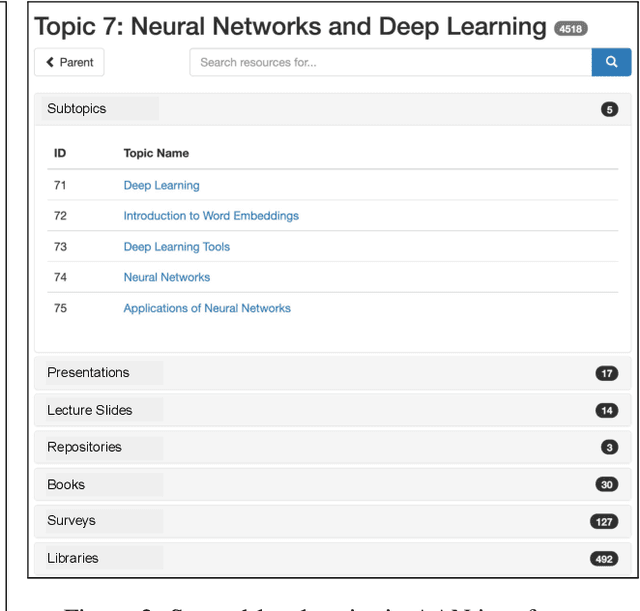
Abstract:A classification scheme of a scientific subject gives an overview of its body of knowledge. It can also be used to facilitate access to research articles and other materials related to the subject. For example, the ACM Computing Classification System (CCS) is used in the ACM Digital Library search interface and also for indexing computer science papers. We observed that a comprehensive classification system like CCS or Mathematics Subject Classification (MSC) does not exist for Computational Linguistics (CL) and Natural Language Processing (NLP). We propose a classification scheme -- CLICKER for CL/NLP based on the analysis of online lectures from 77 university courses on this subject. The currently proposed taxonomy includes 334 topics and focuses on educational aspects of CL/NLP; it is based primarily, but not exclusively, on lecture notes from NLP courses. We discuss how such a taxonomy can help in various real-world applications, including tutoring platforms, resource retrieval, resource recommendation, prerequisite chain learning, and survey generation.
 Add to Chrome
Add to Chrome Add to Firefox
Add to Firefox Add to Edge
Add to Edge